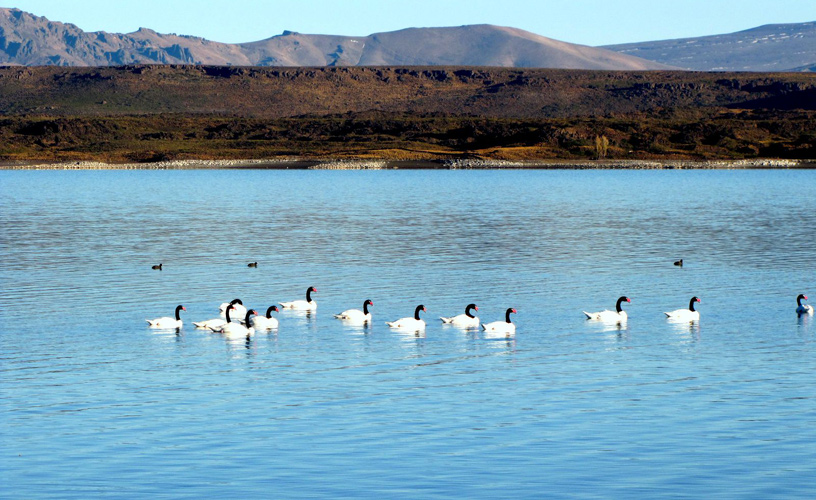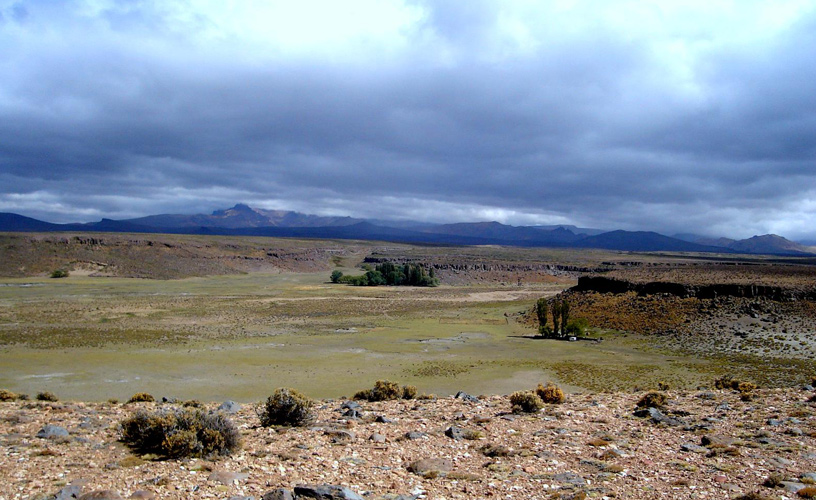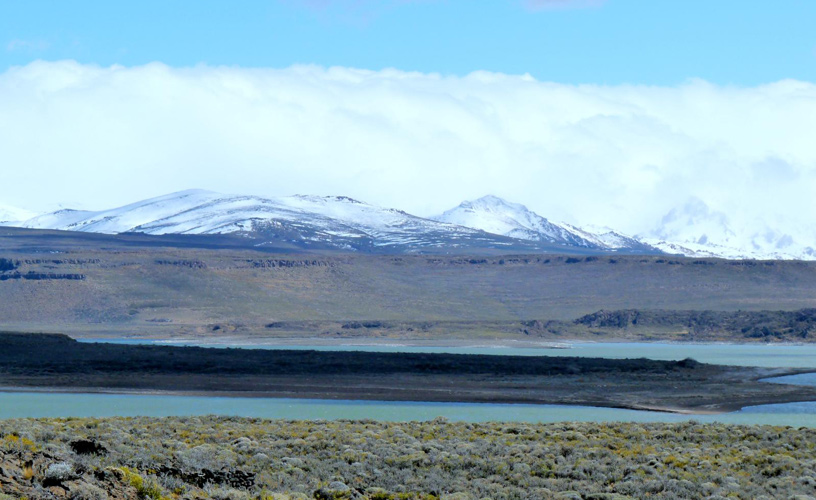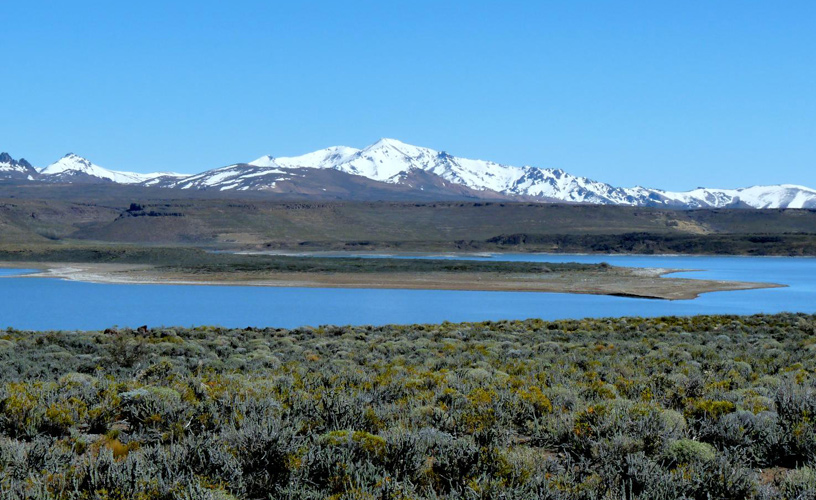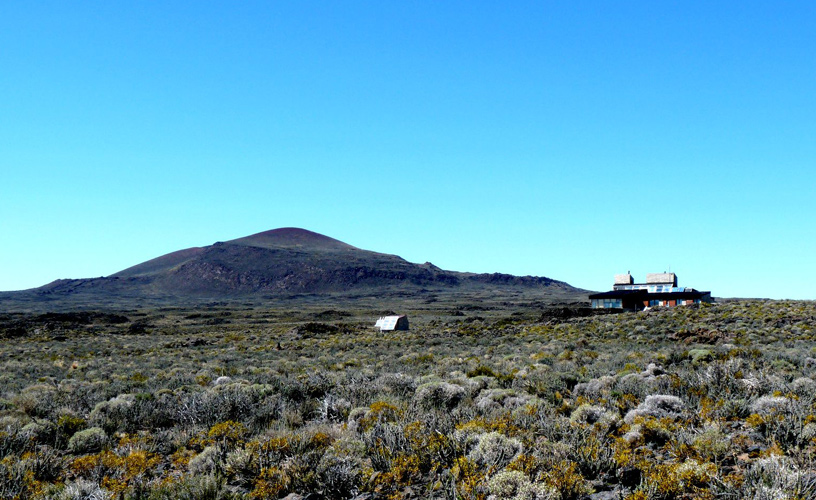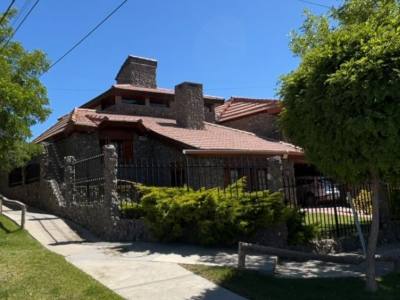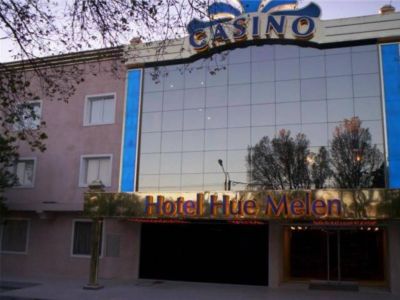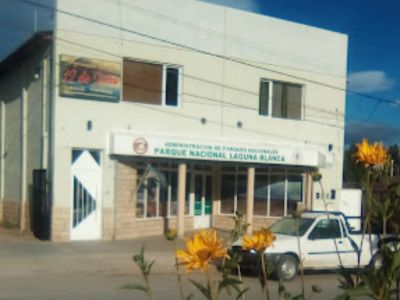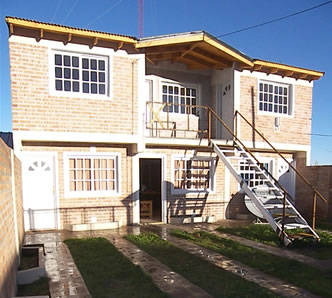Laguna Blanca National Park –whose name stands for White Lake in Spanish- is only a few kilometers from Zapala. It is a renowned nature reserve of great biological importance. The lake itself is 1,270 meters above sea level and there are numerous trails in the high, arid plain communicating different sectors. After traversing volcanic landscape and approaching the wetlands, we gradually discovered different birds whose species we could not always identify. It was only when we determined our location and reached the park warden’s office that we learnt more about this rugged land. The main attraction is represented by the species (over 100) which nest in the reserve during the year. It is the habitat of several kinds of ducks, coots, Magellan geese and flamingoes. But is the black-necked swan the lake owes its name to. Some time ago, they were so numerous that their white feathers hid the waters of the lake and from a distance appeared to be snow.
Laguna Blanca National Park
Birds vary according to the seasons as not all of them visit the region at the same time of the year. The lake is a meeting point for bird watchers who know exactly when the different species nest.
We walked among the rough vegetation, used to strong winds and little water. Shrubs such as nettles, neneo and desert needle grass make up the vegetation and wherever water provides moisture birds nest and feed.
Mónica Pons
Parques Nacionales - Prensa
Contact of the excursion or tour
Parque Nacional Laguna Blanca
Ejército Argentino 217, Zapala, Neuquén, Agentina
Phone: +54 2942-431982
